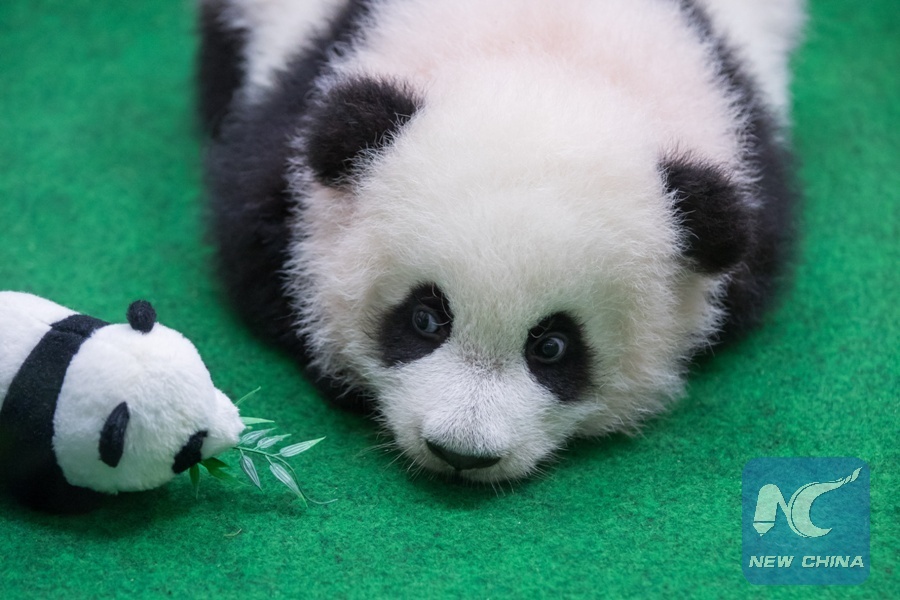
A giant panda cub makes the first public appearance at the Malaysian national zoo near Kuala Lumpur May 26, 2018. (Xinhua/Zhu Wei)
WASHINGTON, June 28 (Xinhua) -- An analysis reported on Thursday in the journal Current Biology showed that panda conservation had great value that extended far beyond protection of pandas themselves.
According to the new findings, the panda's protection as an umbrella species yields 10 to 27 times as much value as it costs to maintain the current reserves.
The findings suggested it might be worth expanding those panda reserves and other investments in natural capital in China.
"Many detractors have argued that spending valuable resources on panda conservation is wasteful," said Wei Fuwen, researcher of Institute of Zoology under the Chinese Academy of Sciences.
"Our analysis contradicts this view and demonstrates clearly the great value of the panda, both for its cultural and intrinsic value and for the ecosystem services provided by panda reserves," said Wei.
Between 1990 and 2010 China's National Conservation Project for the Giant Panda and Its Habitat doubled panda habitat.
By 2010, a total of 67 panda reserves with an area of more than 33,000 square kilometers had been established, covering more than half of suitable panda habitat.
Wei and colleagues found that panda reserves offered a variety of provisioning services that were valued by local people such as growing crops, grazing animals, procuring water supplies, and harvesting firewood and useful plants.
Also, it was linked to the regulatory services that resulted in the hydrologic benefits of managing precipitated water runoff, sediment retention, carbon sequestration and nutrient retention.
To explore the value of pandas and their reserves, the researchers reviewed each of the regulating, provisioning, and cultural services associated with panda reserves, collating estimates of the value of each from numerous studies.
They then converted all those estimates to U.S. dollars and used the median value for each to generate a combined estimate of the annual per-hectare value of panda reserves.
That exercise led them to a median estimate of 632 dollars per hectare per year.
After multiplying that per hectare per year value by estimates of forest area within the 67 panda reserves, they came to a value of 562 million dollars per year in 1980.
By 2010, the value of ecosystem services of the panda and its reserves had increased to somewhere between 2.6 and 6.9 billion dollars per year, according to the study.
"Now, we know that the system of reserves and protections are working to reverse the panda's decline and that these efforts have benefits for society and nature at large," Wei said.
"This should provide added motivation for people to continue backing panda conservation to bring about the eventual recovery of the species."
The researchers also said that this encouraging news provided justification not just for efforts to preserve the panda, but for other endangered species as well.

